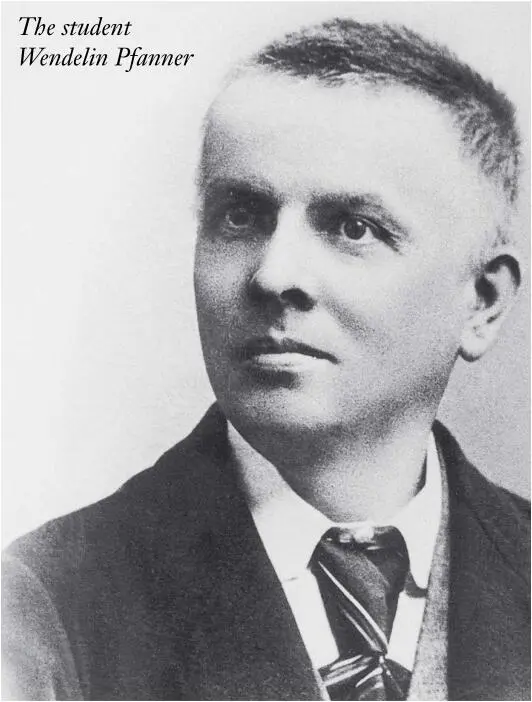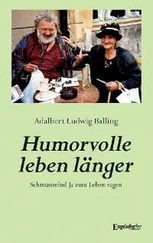At the Brixen Seminary
The first year in Brixen, 1846 – 47, was a so-called “free year” with candidates attending lectures at the seminary but boarding on their own. Wendelin took his studies more seriously now. At the end of the first year he scored a “very good” in Church History under Professor Fessler and in Oriental Languages – Arabic, Syrian, Chaldean – under Professor Gasser, besides getting good passes in Biblical Archeology and Hebrew.
As soon as the students transferred to the seminary they received the clerical tonsure and the “short clerical cassock with tie”. Life now consisted of studies and offered very few diversions. Although there was a bowling alley and a beautiful garden to stroll around in, these pastimes did not provide enough exercise for one who had grown up on a farm in Vorarlberg. The view from his attic window was gorgeous but the mountains he could see were “out of bounds”. Too little exercise, cramped living space and a diet that was “far too greasy and devoid of fiber and vegetables” undermined his health. How could he remain fit? Wendelin took every opportunity to flex his muscles.
Abbot Francis:
“I remember that once during our common recreation my fellow seminarians wished to give themselves additional exercise by freehandedly standing up a tall pole with a handkerchief tied to its top. They could not do it. The few who tried fell on their faces, pole and all. But when they saw me coming they shouted: ‘Here comes Pfanner! He can do it! Just watch him!’ I needed no coaxing but simply picked up the pole, tied my cassock to it and with one jerk: ‘heave-ho!’ stood it up straight, while not moving an inch from my foothold … I venture to say that if there had been prizes for such feats, I would have fetched the first prize every time.”

Later, the Founder remarked that it was the unbalanced diet more than anything else that undermined his health. He came down with a heavy nosebleed and was diagnosed with pneumonia and an inflammation of the brain. Losing consciousness several times, he became so weak that the doctor sent him home to pick up new strength.
The following year, 1848/49, was rather quiet and uneventful. Or was it?
Abbot Francis:
“The only thing I vividly remember about my last year [before ordination] was that I suddenly felt a powerful urge to go to the missions. I also know what triggered it. It was the verse in the Miserere: Docebo iniquos vias tuas et impii ad te convertentur : ‘I will show your ways to the godless and sinners will return to you’. (Psalm 50 : 15), which we prayed every week. It haunted me until I confided the matter to my spiritual director and confessor. He submitted ‘my case’ for decision to the prince bishop. Before long, His Excellency ruled: ‘Oh, that Pfanner lad! He is not strong enough to go to America. He better stay at home.’ – In those days, at the mention of ‘mission’ and ‘unbelievers’ people understood America and nothing but America.”
The bishop had spoken and Wendelin stopped dreaming about the missions. Or did he? For the time being his mind turned to other pursuits. After successfully passing his finals he went on what he called “a pilgrimage to ‘Holy Cologne’.” – In the late middle ages, Cologne had been the most frequented place of pilgrimage after Jerusalem, Rome and Santiago de Compostella. Wendelin had collected enough money for the trip by saving his meagre allowance and cutting his fellow students’ hair. He deliberately denied himself “simple pleasures” for the greater pleasure of seeing a bit of the world and “travelling intelligently”, i. e., learning by seeing rather than reading.
His trip fell in the late summer of 1849. Setting out from Munich, he went via Augsburg, Nuernberg, Bamberg and Wuerzburg to Frankfurt/Main and from there via Coblenz and Bonn to Cologne. He kept his money – all in twenty-ducat coins – safely sewn in his red leather belt and carried his underwear in a backpack. The currency differed from one county or canton to another and so did the food. If, for example, he asked for a bun, he was “served a bun with butter”, although he would have preferred it dry as at home. But such was the custom. When in Rome, do as the Romans do.
The one thing he wished to see before anything else was the cathedral of Cologne with its two grand spires just then under construction. It was in Cologne where he, as president of the “Cologne Cathedral Building Society of Brixen”, delivered the contributions of his fellow seminarians. Then he took a closer look at the magnificent gothic structure.
Abbot Francis:
“I could not see enough of it! If only I could have taken the magnificent edifice with me!6 Construction had been interrupted for many years because the master plan had been misplaced, only to be found again much later in an attic in Darmstadt. I would have also visited Aachen and Brussels, if it had not been for a nasty footsore I had developed when climbing in the Tyrol Alps. Because of this sore I had to discard my boots and buy a pair of soft open shoes, the kind worn by ladies … Leaving Cologne, I travelled up the Rhine via Darmstadt and Worms to Speyer and from there to Heidelberg, Mannheim and Karlsruhe. I was lucky to be able to use one of the new railway lines as far as Freiburg.”
His next longer stop was Strassburg, and only after he had marvelled at all the wonderful sights that famous city offered did he continue his journey to Basel and from there via Lake Lucerne to Switzerland. Though he did not climb the Rigi – “because it was shrouded in mist” – he did visit Flueli7 and Einsiedeln Abbey, where he paid his respects to Our Lady, whom he asked “to help me become a good priest”. On he went on foot to the “delightful Lake Zurich” and from there to Schaffhausen to see “the Rhine Falls”. Passing Constance and Bregenz he arrived home just in time to help with the hay. “Pleased to see you after so many days,” his father welcomed him drily. “We have had nothing but rain so far. Much hey and grass is flat … You will have lots to share I should think but the stories must wait until Sunday!”
Once the harvest was in the barn, Wendelin had a few free days before he returned to Brixen for his final year of Theology. He had excellent professors: Fessler became Bishop of St. Poelten, Gasser, Prince Bishop of Brixen, while two others represented Austria at the Diet of Frankfurt (1848). At the Synod of Wuerzburg (also in 1848), his much esteemed teacher, the historian Dr. Gasser, was called the “living lexicon of Church History”.
Ordination and first Holy Mass
Wendelin was ordained sub-deacon on 14 July 1850, deacon, on 21 July, and priest, on 28 July – all by Prince Bishop Bernhard Galura, in the chapel of the Brixen seminary. Ten of the fifty seminarians ordained that years hailed from Vorarlberg! Soon after becoming a priest Wendelin traveled by horse carriage across the Brenner to Innsbruck and from there by postal coach via Reutte on the Bavarian border to Hindelang, where his father and the assistant priest of Langen waited to meet him. His first Mass was scheduled for 12 August at his home parish in Langen.
Abbot Francis:
“Very many of my relatives who lived scattered in different villages in the Bavarian Allgau came to Langen to welcome and congratulate their priest cousin, who was about to say his first Holy Mass. People in the Allgau consider a first Mass a particularly joyful event. The first thing these cousins and aunts of mine did was to kneel down to receive my blessing. People formed not just a procession but a triumphal parade, starting from the last village on Bavarian soil. Amid the crackling of small cannon and canopied by green triumphal arches I entered our homestead, people pressing in on me from all sides to wish me well. My mother stood with unconcealed pride in the doorway, ready to welcome me. She and my father knelt to receive my blessing, as also did my twin brother whom I had so often thrown into the grass during our boyish games in younger years. … My first Mass was a rare occasion for Langen, because the last such Mass had taken place fully twenty-five years earlier, when my priest uncle Wendelin had stood for the first time at the same altar as I. Now he and I celebrated together, he preaching the sermon.”
Читать дальше













